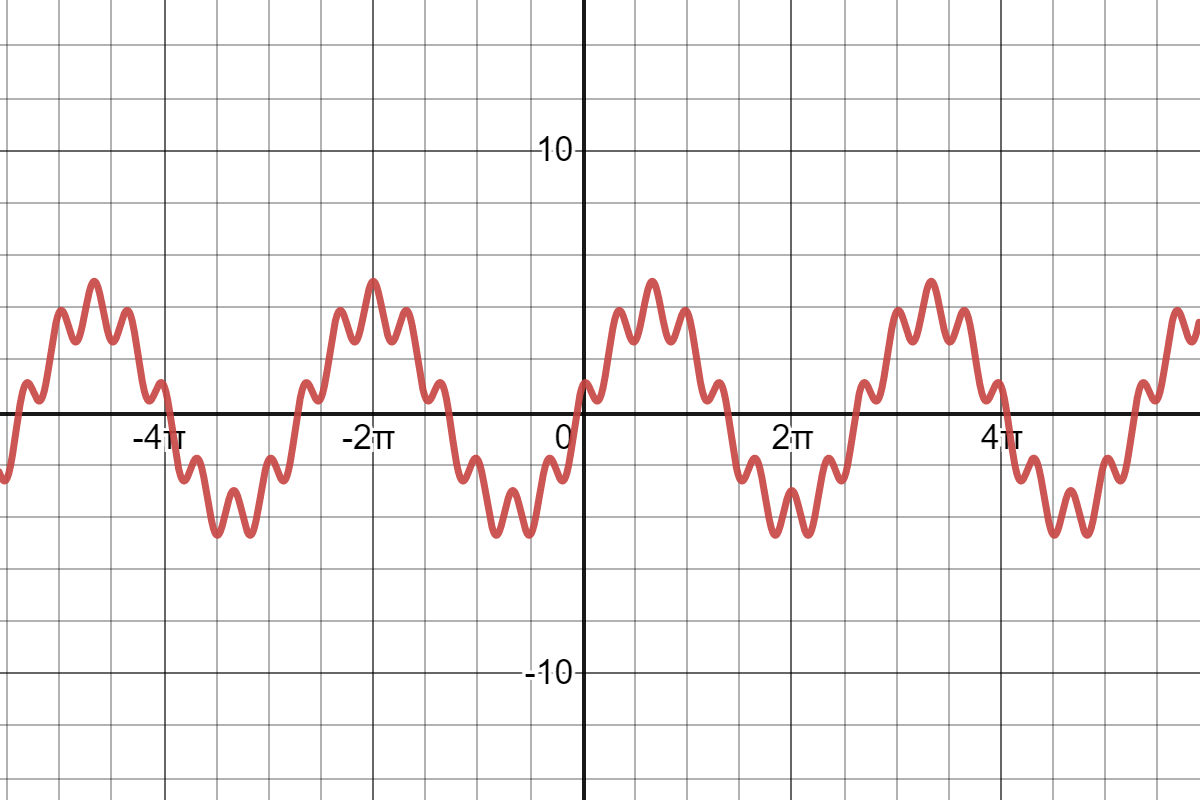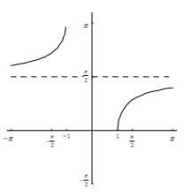Which trig functions have vertical asymptotes at
x=pi/2+pi*n, n=ZZ
tangent and secant
What quadrant is the following angle in?
-(3pi)/4
3rd quadrant
Why is the domain of a trig function restricted when finding the inverse?
A function must be one-to-one (pass the horizontal line test) for its inverse to be a function.
What is the degree measurement for an angle of
(7pi)/4
315^o
Why is the following equal to one?
sinx*cscx
a function multiplied by its reciprocal equals 1
Is the following periodic, sinusoidal, or both?

Periodic, not sinusoidal
Which trig functions are negative in the 2nd quadrant?
Cosine, Secant, Tangent, Cotangent
Which inverse trig function has the following graph?

arcsec(x)
What is the radian measurement for the given angle?
225^o
(5pi)/4
Write the following in terms of its cofunction:
tan(28^o)
cot(62^o)
The _______ of cosine match up with the ______ of secant.
max's/min's......min's/max's
What is the smallest positive coterminal angle to
-(2pi)/3
(4pi)/3
Evaluate the following:
arctan(tan(pi))
0
What is the range of arcsec(x)?
0<=x<=pi
What is the pythagorean trig identity that involves tangent?
tan^2x+1=sec^2x
What two functions would bound the following function?
y=2x-2cosx
y=2x-2 and y=2x+2
Evaluate:
sec((4pi)/3)
-2
Evaluate the following:
arccos(sin((5pi)/3))
(5pi)/6
90 degrees or pi/2
Simplify the following expression using a negative angle identity:
csc(-x)*tan(x)
-sec(x)
Create the equation of a function that IS sinusoidal.
answers vary
y=asin(bx)+-dcos(bx)
Given that...
sec(theta)<0
tan(theta)=-9/2
What is...
cos(theta)
cos(theta)=-(2sqrt85)/85
E
artctan(-sqrt3/3)
valuate:
-pi/6 or (11pi)/6
About how many degrees is one radian?
57.3 degrees
Simplify the following trigonometric expression:
(sin^2x)/(1-cosx)-cosx
1